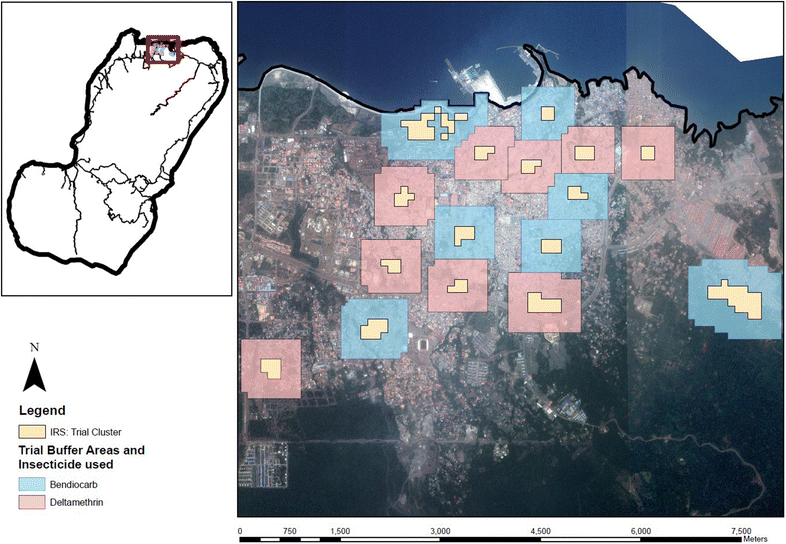A cluster randomized trial comparing deltamethrin and bendiocarb as insecticides for indoor residual spraying to control malaria on Bioko Island, Equatorial Guinea
- PMID: 27448667
- PMCID: PMC4957409
- DOI: 10.1186/s12936-016-1433-0
A cluster randomized trial comparing deltamethrin and bendiocarb as insecticides for indoor residual spraying to control malaria on Bioko Island, Equatorial Guinea
Abstract
Background: Indoor residual spraying (IRS) has been used on Bioko for malaria control since 2004. In 2013 the insecticide was changed from bendiocarb to deltamethrin. Shortly after this change, there was a marked increase in malaria prevalence on the island. This trial was carried out to compare the effectiveness of bendiocarb and deltamethrin for use in IRS on Bioko.
Methods: Twenty-four clusters of houses were randomized to receive IRS with either bendiocarb or deltamethrin. Approximately 3 months after the intervention, the prevalence of malaria and levels of haemoglobin were measured in children aged 2-14 years in each cluster.
Results: Prevalence of malaria in 2-14 year olds was lower in the bendiocarb arm (16.8, 95 % CI 11.1-24.7, N = 1374) than in the deltamethrin arm (23.2, 95 % CI 16.0-32.3, N = 1330) but this difference was not significant (p = 0.390), even after adjusting for covariates (p = 0.119). Mean haemoglobin in children was marginally higher in the bendiocarb clusters (11.6 g/dl, 95 % CI 11.5-11.8, N = 1326) than in the deltamethrin clusters (11.5 g/dl, 95 % CI 11.3-11.7, N = 1329). This difference was borderline significant after adjusting for covariates (p = 0.049).
Conclusions: The results are suggestive of bendiocarb being more effective at preventing malaria on Bioko although evidence for this was weak. The results are likely due to the fact that local vectors remain fully susceptible to bendiocarb whereas subsequent tests have shown resistance to deltamethrin.
Figures
References
-
- WHO. World Malaria Report 2015. Geneva: World Health Organization. 2015. http://www.who.int/malaria/publications/world-malaria-report-2015/en/. Accessed June 2016.
Publication types
MeSH terms
Substances
LinkOut - more resources
Full Text Sources
Other Literature Sources
Medical



